Showcase overview
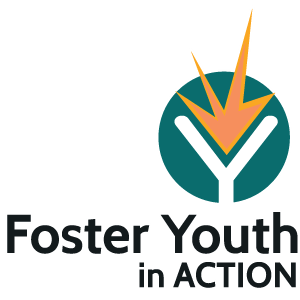 “Nothing about us without us is our motto,” they said in unison, concluding their presentation. On June 15, 2016, approximately 75 child welfare stakeholders from over 40 groups listened to foster youth leaders from 10 different states. Through video conference technology, Foster Youth in Action (FYA) hosted its inaugural Voices Rising Showcase, a presentation of major advocacy milestones achieved by 10 foster youth-led organizations within FYA’s coalition.
“Nothing about us without us is our motto,” they said in unison, concluding their presentation. On June 15, 2016, approximately 75 child welfare stakeholders from over 40 groups listened to foster youth leaders from 10 different states. Through video conference technology, Foster Youth in Action (FYA) hosted its inaugural Voices Rising Showcase, a presentation of major advocacy milestones achieved by 10 foster youth-led organizations within FYA’s coalition.
The showcase demonstrated the rich depth of experience gained from a large, national network of advocates. FYA’s 16-organization coalition represents 30% of US states and over 50% of current foster youth. Every organization in our network ascribes to the philosophy that current and former foster youth should shape the discussion of foster care reform. This Showcase arose, in part, to address what FYA sees as inadequate media coverage of growing national coordination among current and former foster youth-led groups. Through events like Voices Rising, FYA empowers youth-led organizing and advocacy groups to share intelligence and connect with a larger, national audience of stakeholders.
General Results
 Over 80% of participants engaged in the showcase through the video call feature, a symbolic tip of the hat to the role of technology within a youth-led social movement.
Over 80% of participants engaged in the showcase through the video call feature, a symbolic tip of the hat to the role of technology within a youth-led social movement.
Half of the presenting groups chose new legislation as their recent accomplishment. In total, five partners presented nine bills that are now either state laws or progressing in that direction. The bills ranged in scope from provisions for normalcy rights to sex-trafficking protections to a new statewide ombudsman office. Beyond policy creation, two other groups presented projects focused on policy implementation, such as the design of transitional services in Georgia or the development of youth engagement tools for case planning in Maine. Outside of the policy realm, two teams described an educational campaign as their proudest achievement. For example, in Philadelphia, youth advocates convinced at least one college to write a grant proposal for a campus support program for former foster youth. Regarding direct services, our Hawaiian partner presented a unique project: a four-day, ecology-based retreat in which foster youth learned how to heal from personal trauma through Hawaiian cultural practices.
The table below outlines the campaigns featured based on category:

The table below summarizes key details of all 10 projects:

State-by-state Summary of Service Projects
VRS proved that our partners are effective at producing meaningful victories. In order of appearance, the following are highlights from 10 best-in-class, youth-led projects that were featured:
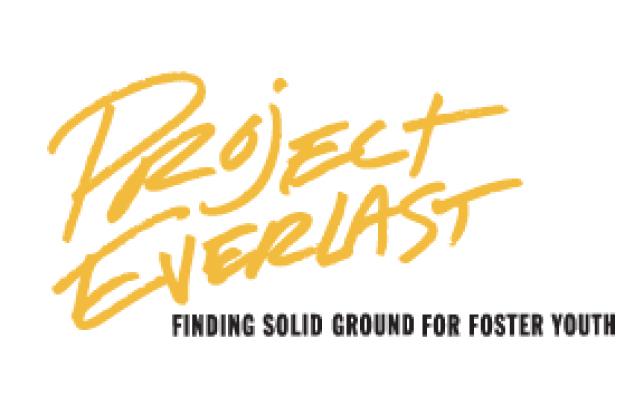 1. Nebraska’s Project Everlast (“PE”) – New Legislation
1. Nebraska’s Project Everlast (“PE”) – New Legislation
Panelists: Rosetta Judd, Cassy Rockwell – PE youth leaders
What: PE youth leaders tasked themselves with influencing LB 746, Nebraska's implementation of the Federal Sex Trafficking & Strengthening Families Act of 2014 ("SFA"). SFA required each state to (1) develop normalcy protections for foster youth, including participation in extracurricular activities; (2) provide foster youth with notice regarding their rights; (3) engage youth in case planning; and (4) ensure foster youth receive vital documentation upon emancipation, such as birth certificates and social security cards.
Why: Thanks to PE, the Nebraska legislature customized a youth-friendly interpretation of SFA, including (1) requirements for foster parents to factor their ward's goals when making "reasonable and prudent parent" decisions, (2) public posting of youth rights in congregate care settings, (3) court checks ensuring foster youth involvement in case planning, and (4) "comprehensive dispatch packages" which go beyond the provision of basic documents to include information on relatives and transition services.
How: According to Cassey Rockwell, “current and former foster youth advocates "presented at a legislative hearing in front of senators and community members. They presented at press conferences, wrote editorials for newspapers. They actually went to our capital and pulled senators off the legislative floor to discuss the policy and advocate for their voice.”
Memorable Moment: "We were able to pass that legislation with unanimous support from our legislature and an immediate signature from our very, very conservative governor." ~Cassy Rockwell
 2. Iowa’s Achieving Maximum Potential (“AMP”) – New Legislation
2. Iowa’s Achieving Maximum Potential (“AMP”) – New Legislation
Panelists: Laticia Aossey, Jake Carmi - AMP youth leaders
What: AMP also chose to tackle their state's implementation of the Sex Trafficking & Strengthening Families Act of 2014, focusing on the human trafficking side of the legislation. “We really started the [local] movement to fix that problem," said Laticia Aossey. Since inception, AMP has helped pass 33 laws.
Why: "Human trafficking is here in Iowa, big and bad," AMP coordinator, Ruth Buckels, told the Iowa Telegraph Herald. Thanks to AMP youth leaders, in the Spring of 2016, the Governor of Iowa signed several new laws, which, among other things, (1) created an office to oversee human trafficking combat efforts and (2) protected the confidentiality of court records for juvenile trafficking victims.
How: In July of 2015, 45 youth representatives (including 10 returning mentors) attended AMP Camp, which was the start of the AMP idea generation cycle. In October, 16 AMP youth councils across Iowa received and voted on their top policy ideas. In November, AMP's platform was sent to Iowa's Department of Human Services for review. One month later, AMP finalized their policy agenda. Finally, youth leaders attended AMP Day on the Hill in January of 2016, where they held a press conference and lobbied their legislative representatives.
Memorable Moment: (a) "For me, AMP Camp is where I found my forever family." ~Laticia Aossey; (b) "Being an AMP member builds your self-esteem, gives you a voice, encourages leadership skills, gives you lifelong friends, prepares you for adulthood, helps give back to others, supports your education goals, and strengthens relationships." ~ Jake Carmi
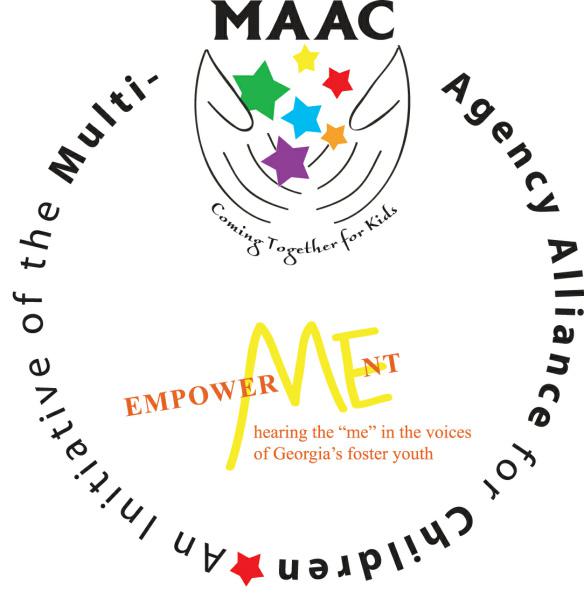 3. Georgia’s EmpowerMEnt - Policy Implementation
3. Georgia’s EmpowerMEnt - Policy Implementation
Panelists: Antoinette Rucker, Brittany Myers – GE youth leaders
What: Georgia's Division of Family and Children Services invited GE to participate in designing its "Connected by 21" plan ("CB21"), a five-year government blueprint for providing transition-aged services to foster youth between the ages of 18 and 21.
Why: GA EmpowerMEnt ensured CB21's design incorporated current and former foster youth perspectives. Roughly 2,300 foster youth between the ages of 14 and 17 are enrolled in Georgia's independent living program, and nearly half of them reside in an institutional setting. Each year, 700 foster youth age out of foster care in Georgia.
How: Between July 2015 and January 2016, current and former foster youth leaders from GA EmpowerMEnt hosted or participated in a series of CB21 focus groups, lasting 4 to 6 hours each. Also, GA EmpowerMEnt executes the "Youth Engagement Strategy" for the Georgia Youth Opportunities Initiative, a partnership between public, private, and nonprofit organizations, all working to improve outcomes for transition-aged youth.
Memorable Moment: "One of my favorite things about the kick-off event was the state was so intentional in its efforts to include the youth voice. That was a really big deal to me. They really looked at us as partners and brought us together as a team, instead of using youth as sounding boards." ~Antoinette Rucker
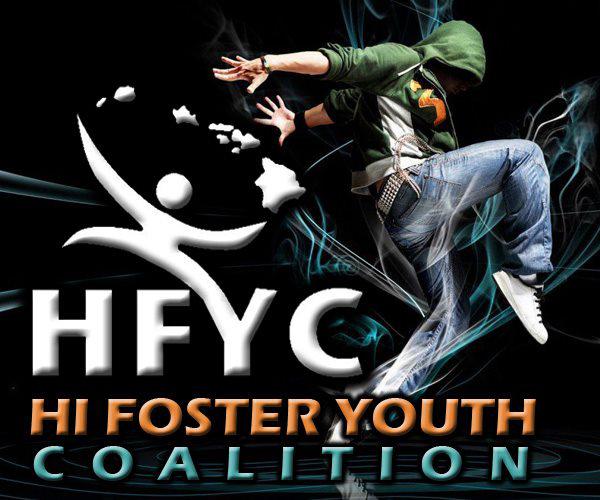 4. Hawaii Foster Youth Coalition (“HFYC”)– Direct Service
4. Hawaii Foster Youth Coalition (“HFYC”)– Direct Service
Panelist: Brianne Nagamine – HFYC youth leader
What: HFYC wanted to "to help current and former foster youth heal from trauma by offering a peer support group where they can engage in activities that focus on Hawaiian culture, traditions, and values," said Brianne Nagamine. As a result, HFYC hosted the Healing Kaho'Olawe Project, a four-day cultural retreat focused on healing from trauma.
Why: Consistent with FYA's Healing from Trauma national campaign, Brianne said, "Although there had been recommendations nationally for this issue, HFYC felt as if we had to take matters into our own hands … By engaging [in culture practices], you can overcome trauma and increase resilience because culture helps us figure out our identity and purpose in life, where we belong, who we are, where we come from. Culture helps us create a community." It's worth noting that Brianne also proposed suicide prevention solutions as part of her 2015 internship with Congressional Coalition on Adoption Institute.
How: In addition to group exercises, youth engaged in conservation work, such as clearing outdoor pathways: "So when we heal the land from all the trauma, we're able to heal ourselves from all the trauma that we experienced," said Brianne. Youth also engaged in Ho’oponopono circles, where they "talked about forgiveness and moving on, moving forward together," as well as the "Mahalo" ritual of expressing gratitude.
Memorable Moment: "Mahalo [is] where we got to appreciate and be thankful for everything …We're thankful for our bodies, thankful for the food, thankful for nature, thankful for the sun. We were just appreciative of everything, of being on the island and how it helped us all heal." ~Brianne Nagamine
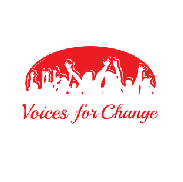 5. Texas Voices for Change (“VFC”) - New Legislation
5. Texas Voices for Change (“VFC”) - New Legislation
Panelists: Kristopher Sharp, April McWilliams – VFC youth leaders
What: VFC led the charge that established a state ombudsman office in Texas. The new legislation went into effect on 9/1/15. Kristopher Sharp told the Texas Tribune, "Young people in the foster care system will now have a truly neutral outlet to raise concerns about the care they receive."
Why: Despite repeated external reports of abuse within group homes, VFC learned "that from 2012 to 2015, there were only seven complaints filed [in the entire state of Texas] … it was an office within the child welfare agency that investigated these complaints, so it wasn't necessarily autonomous of the agency," said Kristopher.
How: Before initiating legislative action, VFC first studied ombudsman models in other states. Subsequently, "we went to the state capital to testify, share our personal experiences and instances where we didn't have the opportunity to report things that happened to us while in care. So the bill was passed. We asked to be at the table at the implementation phase, so we were able to come up with rules such as protections in place for youth against retaliation for reporting," said April McWilliams.
Memorable Moment: "In the 2013 legislative session, the bill didn't even get a hearing. It was just a conversation piece. But what it did was gave us a framework to work in." ~Kristopher Sharp
 6. Maine’s Youth Leadership Advisory Team (YLAT) – Policy Implementation
6. Maine’s Youth Leadership Advisory Team (YLAT) – Policy Implementation
Panelist: Ahmen Cabral, YLAT Program Coordinator
What: YLAT youth leaders helped develop a tool for social workers "which translates right into the state of Maine case plan," according to Ahmen Cabral. She said, "We actually had six youth that helped facilitate training for over 200 workers. We would go to each district office to be able to talk about meaningful youth engagement and develop meaningful relationships where case planning can happen."
Why: "One of the things that young people shared over and over is that no one had ever asked what they wanted, and that was pretty amazing to us, and yet that was something that they shared over and over," said Ahmen.
How: Training youth leaders with core skills, such as the art of facilitating group conversation, was part of the secret to YLAT's success. "We did training with them, we talked about the Youth in Care Bill of Rights which everyone has now, and we had the opportunity to talk about what rights mattered to them … It really helped to explain what the rights meant using youth-friendly language, and we were able to take that and share that with caseworkers," said Ahmen.
Memorable Moment: "I will say that from staff, they overwhelmingly really appreciated and asked to have more youth-training … when young people shared their voices, the case workers showed up, and they were really attentive." ~Ahmen Cabral
 7. California Youth Connection – New Legislation
7. California Youth Connection – New Legislation
Panelists: Serena Skinner, Katrina Quiroz – CYC youth leaders
What: With over 300 youth members across California, CYC chose to sponsor legislation focused on protecting sibling relationships post-adoption. Introduced on 2/16/16, California Senate Bill 1060 mandates the facilitation of a meeting to determine whether to execute a voluntarily contact agreement between the adoptee's siblings and adoptive parents.
Why: While Federal legislation upheld the importance sibling relationships for foster youth in 2008, it has been left up to states to vigorously enforce the maintenance of sibling connections. CYC youth leaders felt that this solution helped close a critical loophole.
How: Each year CYC's youth members hold elections for two statewide leadership bodies: (a) the advisory board and (b) the legislative committee. The advisory board is CYC's governing body with "representatives from all 33 chapters throughout the state who meet quarterly to vote and make decisions." Conversely, the legislative committee is exclusively focused on CYC's policy agenda. Together, these groups organized two annual events: (a) Summer Leadership and Policy Conference, a four-day conference where participants explored problems in foster care and developed solutions, and (b) Day at The Capitol, a three-day conference held on 2/21/16, during which youth leaders "visit with all 120 legislators and we talk about CYC's priorities and the bill of the year," explained Serena.
Memorable Moment: "That was my first conference starting with CYC, so it was a very fun and exciting experience because I've never really gone outside of myself or my foster home, and seeing other youth with the same issues as me, or just someone to relate to." ~Serena Skinner
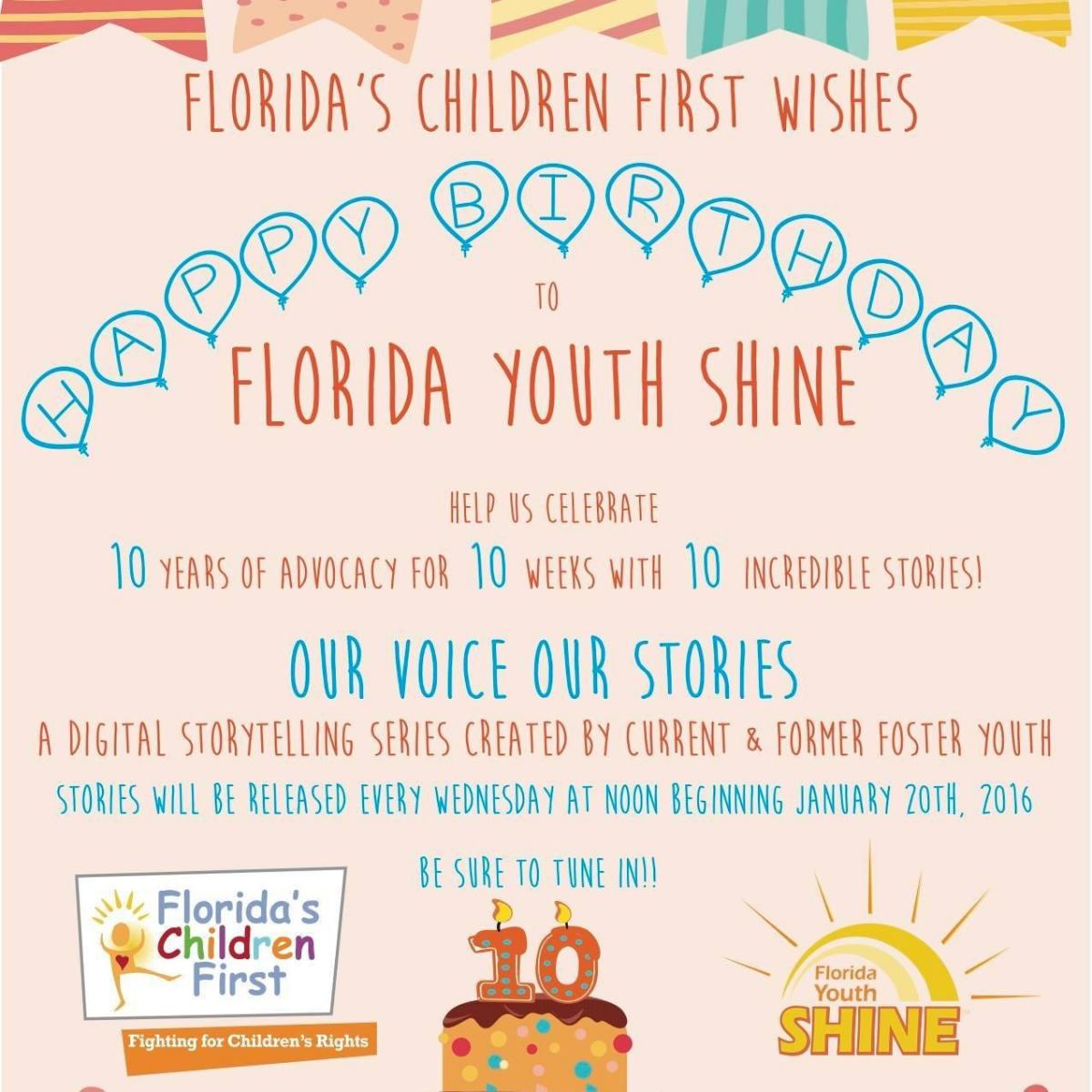 8. Florida Youth Shine – Education Campaign
8. Florida Youth Shine – Education Campaign
Panelists: Dan Scott, Chelsea Bramblett – FYS youth leaders
What: Harnessing the power of visual media, FYS armed 10 of its current and former foster youth advocates with the training and resources to write and produce their life story. Averaging 3-minutes in length, and filled with personal pictures and clips, youth leaders narrated their videos. "We had 10 digital stories, so every week, every Wednesday, we would release a different digital story," said Dan Scott, who released his digital story in week 2 of the campaign. The youth also developed a curriculum to complement their digital story collection.
Why: "We just recently celebrated our 10th anniversary birthday," said Chelsea, whose digital story centered around the verbal abuse she overcame as a child. Chelsea believed that her road to Tallahassee to advocate for normalcy rights for foster youth helped her gain self-confidence. "It was definitely a healing process to share my story. It was also a way for me to get comfortable and find out a lot of information about the child welfare system that I didn't know before," Chelsea said.
How: "10 of our youth from FYS were able to meet at a college, and we had the Center for Digital Storytelling come in and help us facilitate the experience for the youth," Chelsea explained. "We gave the youth the opportunity to share their stories in different ways, in ways that we had never done before and let their truth be heard in a way that they felt confident," she added.
Memorable Moment: "In addition to creating these stories, we also had another accomplishment, and that was the tuition waiver. Now, foster youth in the state of Florida are eligible for free tuition until the age of 28 for any degree." ~Dan Scott.
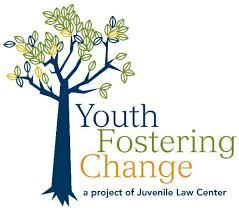 9. Philadelphia’s Youth Fostering Change – Education Campaign
9. Philadelphia’s Youth Fostering Change – Education Campaign
Panelists: Brittany Spence, Cathy Moffa – FYS Youth leader and staff
What: In October of 2015, YFC youth leaders "chose access to higher education as their issue," said Cathy Moffa, the Associate for Youth Engagement for Juvenile Law Center’s Youth Fostering Change Program. After eight months of group meetings, the youth leaders developed seven recommendations to help improve on campus supports in a document titled: Achieve Success: Guidance for Colleges to Better Support Foster Youth: These recommendations are: (1) a foster youth liaison, (2) housing during breaks, (3) emergency financial assistance; (4) money management advising, (5) a summer bridge program, (6) health care and health insurance, and (7) academic advising. The document also highlights tiered pledges for colleges and personal stories about apprehensions and fears around going to college from current foster youth.
Why: According to widely cited research, approximately 3% of foster youth graduate from college. Thanks to the efforts of YFC, "Cabrini College has already agreed to cite our recommendations in their grant proposal to increase supports for foster youth on campus," said Brittany. Also, YFC leaders are in the early stages of conversation with two other local colleges.
How: Employing a competitive recruitment process, Youth Engagement Staff accepted seven current and former foster youth leaders into its program in the Fall of 2015. Brittany reviewed the YFC advocacy cycle: "We meet once a week from October to May to work on addressing issues that foster youth go through … every year we pick a new issue to build a campaign around …”[This year for our campaign] we met with representatives from Cabrini College, Community College of Philadelphia, and the University of Pennsylvania to discuss recommendations for improving on-campus support for foster youth."
Memorable Moment: "This [project] has made a difference for me because I have aspirations to go to college … I think it will benefit me and inspire me." ~Brittany Myers
 10. Oregon Foster Youth Connection – New Legislation
10. Oregon Foster Youth Connection – New Legislation
Panelist: Joshua Ashbaugh, OFYC youth leader
What: On 9/28/15, nine OFYC members were present to watch Governor Kate Brown sign OFYC's two bills into law: (1) HB 2889 enabled foster youth to open a savings account in their name, without a co-signer, starting at age 12, and (2) HB 2890 required substitute care providers to ensure foster youth have the opportunity to participate in at least one ongoing extracurricular activity.
Why: According to Joshua, youth "were exiting care without money. So they were either on the paycheck-to-paycheck mentality, or they just didn't have money when they were aging out. So we wanted to address that … with the extracurricular activity bill, not everybody has a chance to get involved because of transportation and cost. That was a huge deal as well. Some of the benefits that I saw personally was I actually had the opportunity to be involved with sports … I gained social skills, communication skills, a sense of direction, a great support system through high school, keeping my grades up, and I also experienced a lot of new skill sets that I didn't know that I had."
How: "We started out with a summer conference, we found some of the issues that some of the youth were having, and some of the barriers that were stopping them from succeeding, and we brainstormed solutions. So, we nominated a legislative action team. I was actually nominated to be on that team as well, which was an awesome experience. After we had nominated a select few, we found a lobbyist, a local lobbyist, who knew the game, knew how to get into the door and have the dialogue on the legislative side of things, the law side of foster care. After we had done that, we lobbied our bills ourselves. We went down to the capitol, and we talked to legislators and staff members," said Joshua.
Memorable Moment: (a) "It was hard to find co-signers. And when you did find one [prospect], it was hard to trust them." (b) "The learning curve was getting out of the comfort zone. I mean this is the first time I jumped into OFYC. It was my first event. Learning is by doing. If I didn't take this opportunity a year back, I wouldn't be here talking in front of you guys and having the confidence that I have." ~Joshua Ahsbaugh
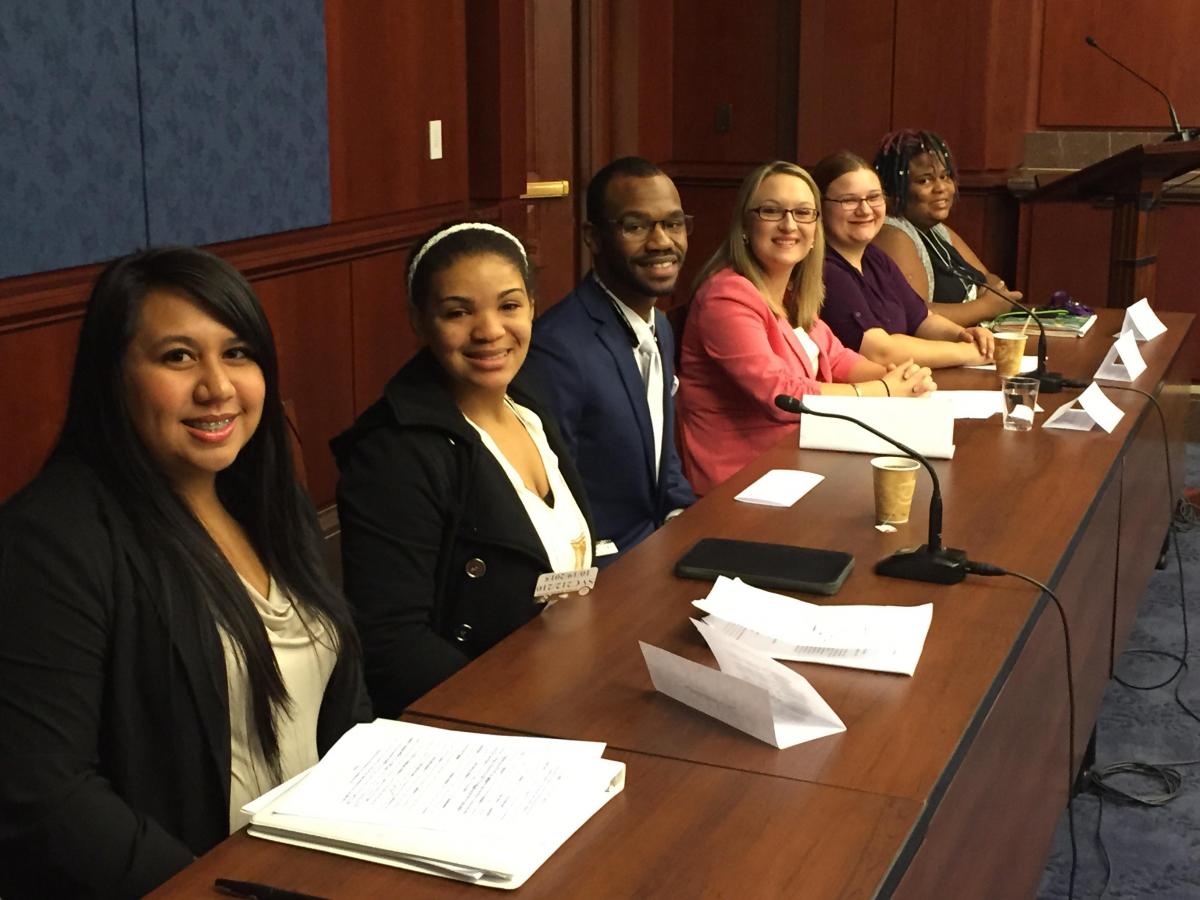
Headquartered in downtown Berkeley, and with a direct view of a university renowned for its history of activism, FYA was formed in 2008 so that like-minded, youth-led organizations can help each other protect and promote the integrity of what foster youth are saying. Numerous policy makers are openly supporting youth engagement within child welfare policy design. Moreover, child welfare advocates have utilized youth narratives in some form to shape nearly every major turning point in the history of foster care: the availability of federal funding in 1961, mandatory reporting laws in 1974, the family preservation ethos in 1980, the creation of the first Federal Independent Living
Program in 1986, reunification timelines in 1997, and the push to extend foster care eligibility through the age of 21 in 2008. In 2016, the youth leaders in our network are being tapped to weigh in on the Families First Act, legislation that would (a) allow states to redirect funds from foster care services to prevention services, and (b) cut off funding for most group homes.
We are now entering an era where advancements in technology, research, and best practices will enable current and former foster youth advocates to, not only source problems and solutions, but lead the foster care reform discussion on an unprecedented scale. Importantly, as demonstrated during the showcase, many current and former foster youth advocates reported the healing benefit of utilizing their life stories to advocate for future generations of foster youth. Through meaningful dialogue, such as those that took place during the Voices Rising Showcase, our network of foster youth-led organizations are quietly and collectively on the verge of inking a place in foster care history.

 Owner/Editor - Chris Chmielewski
Owner/Editor - Chris Chmielewski